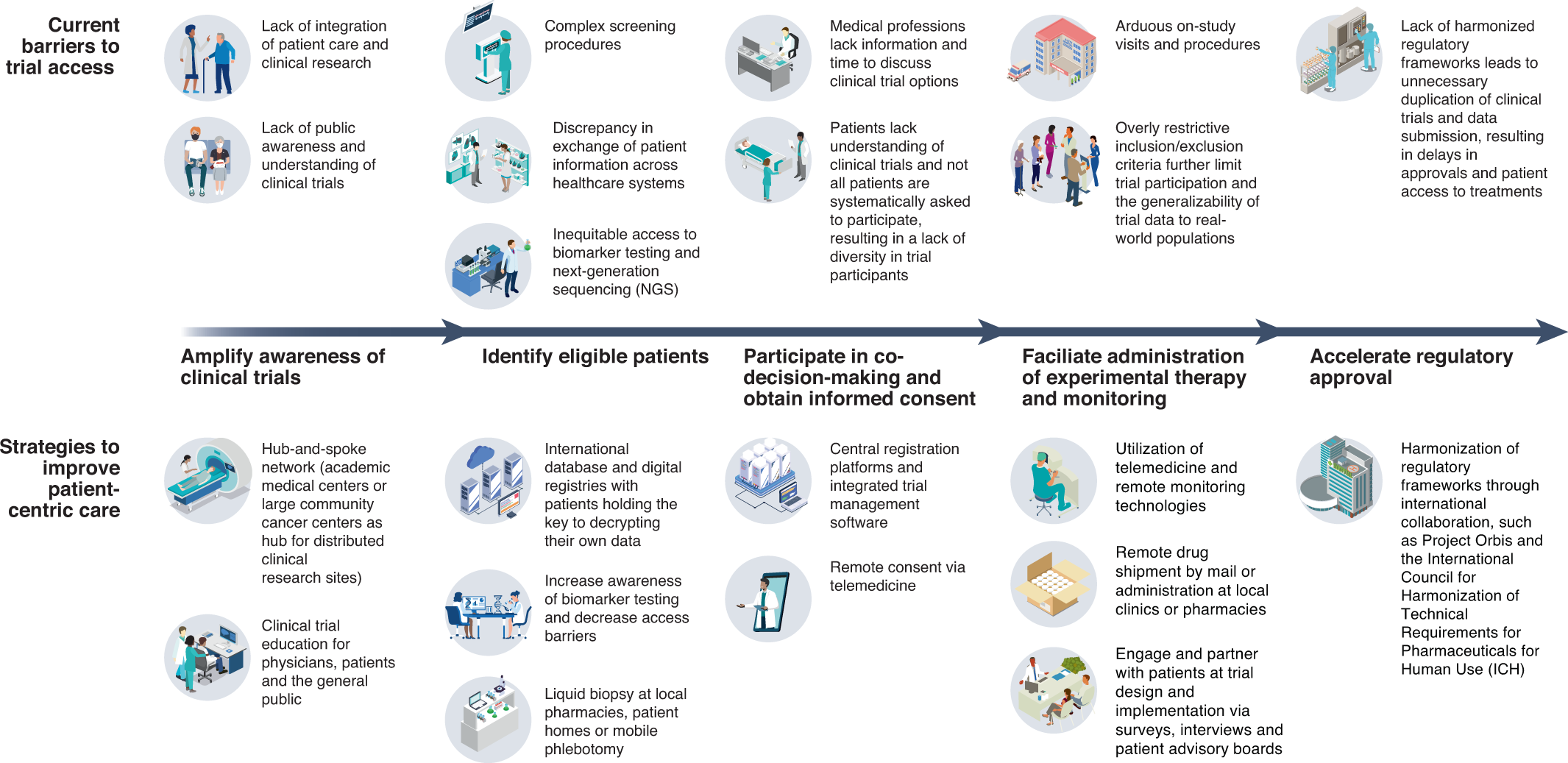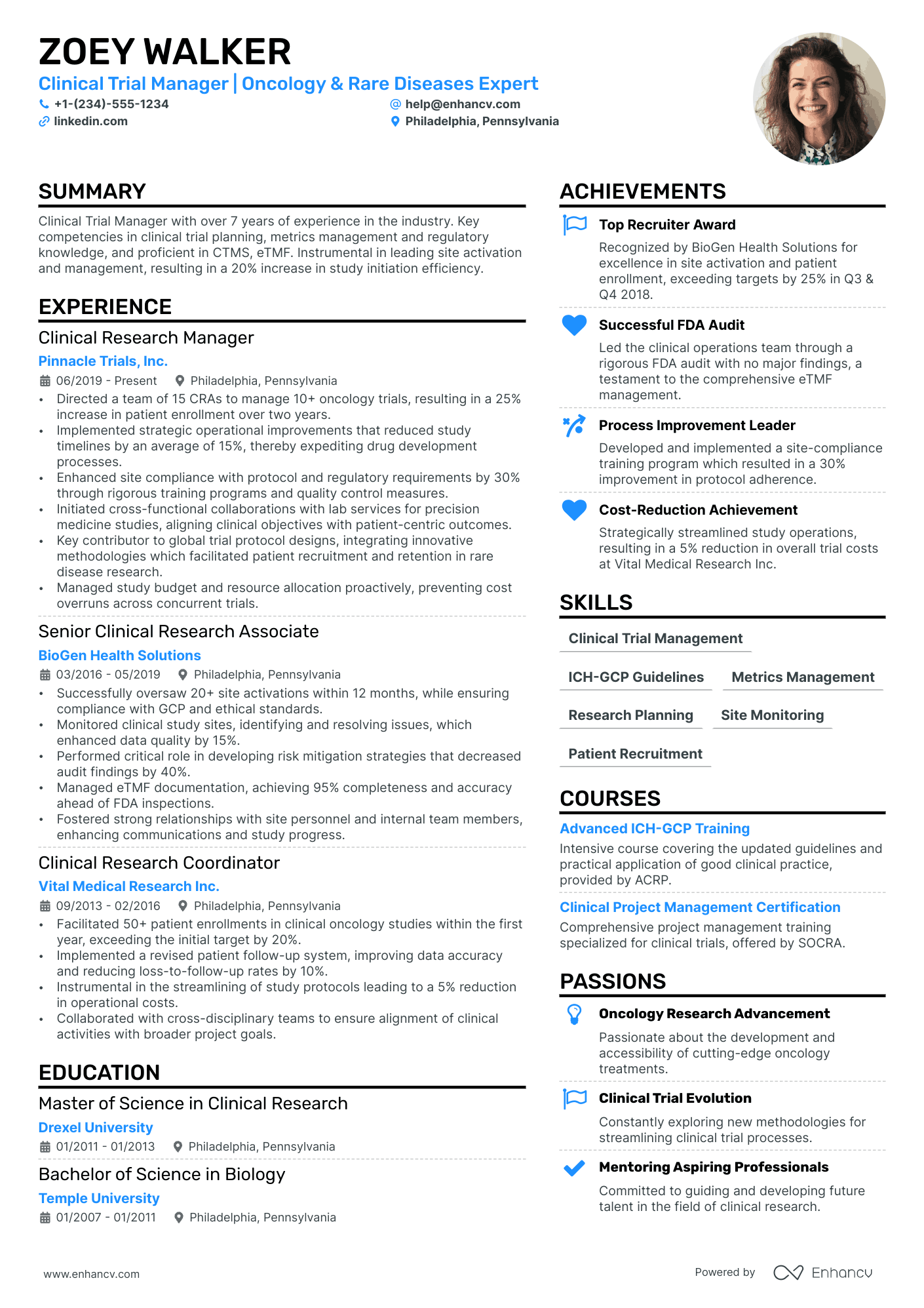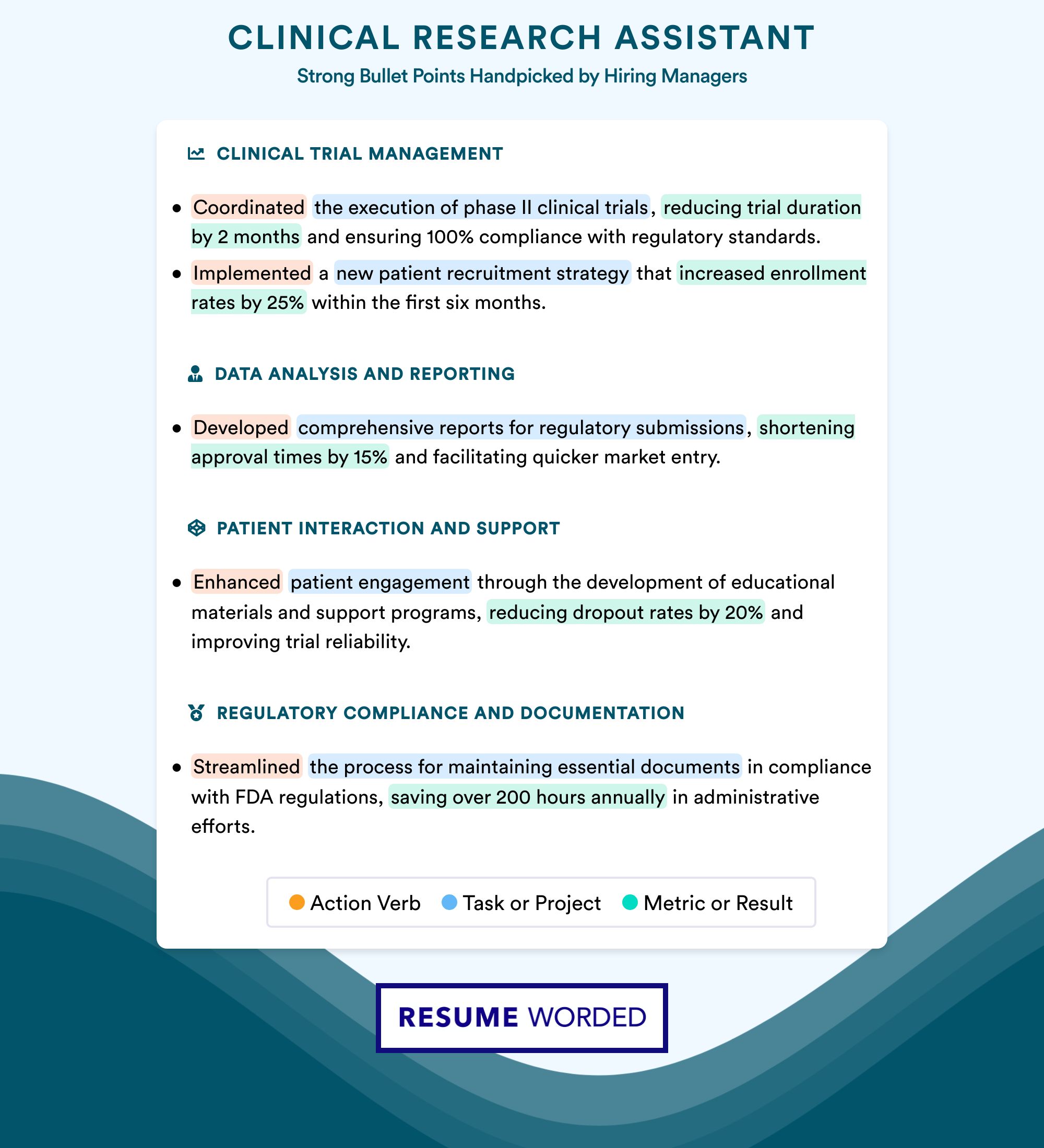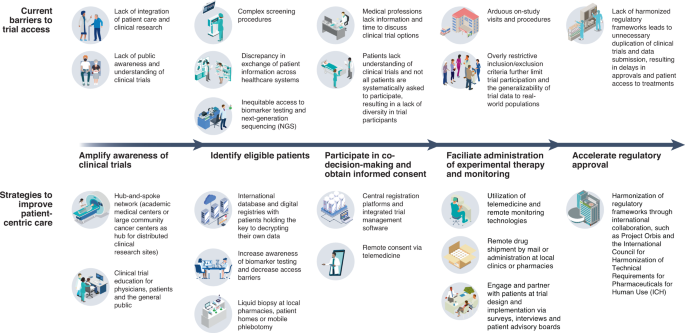Boost oncology clinical trial enrollment with strategic project management by enhancing patient outreach, streamlining protocols, improving site engagement, leveraging digital tools, and ensuring clear communication.
Effective project management strategies play a key role in this process. With the right approach, you can streamline operations, enhance patient engagement, and boost trial participation. Oncology clinical trials often face challenges like patient recruitment and retention. These challenges can delay research and impact results.
By applying targeted project management strategies, you can overcome these obstacles. You can ensure a smoother and more efficient trial process. This blog will explore various strategies that can help increase enrollment in oncology clinical trials. From enhancing communication to leveraging technology, we’ll cover essential methods to drive success in your clinical trials.

Credit: www.nature.com
Importance Of Enrollment In Oncology Trials
The enrollment of patients in oncology clinical trials is crucial. It helps advance cancer research and improve patient care. Without sufficient participation, these trials cannot produce reliable results. This, in turn, slows down the development of new treatments.
The importance of enrollment in oncology trials extends beyond research. It directly impacts patient outcomes and the future of cancer treatment. Below, we explore the various aspects of enrollment in oncology trials.
Impact On Research
Enrollment in oncology trials plays a significant role in cancer research. It ensures that studies have enough data to draw meaningful conclusions. This helps researchers understand the effectiveness of new treatments.
Without adequate enrollment, trials cannot provide statistically significant results. This leads to delays in bringing new therapies to market. As a result, patients may miss out on potential life-saving treatments.
| Enrollment Level | Impact on Research |
|---|---|
| High | Reliable data and faster conclusions |
| Low | Unreliable data and delayed progress |
Patient Benefits
Participating in oncology trials offers several benefits for patients. They gain access to cutting-edge treatments that may not be available otherwise. This can be especially important for those who have exhausted standard treatments.
Patients in trials receive close monitoring and care from top medical professionals. This ensures they receive the best possible treatment. Furthermore, participation in trials can provide a sense of contribution to the fight against cancer.
- Access to new treatments
- High-quality medical care
- Contributing to cancer research
Identifying Target Patient Groups
Increasing enrollment in oncology clinical trials requires effective project management strategies. One key strategy is identifying target patient groups. By understanding who these patients are, trials can be tailored to meet their needs. This approach enhances patient recruitment and retention.
Demographic Analysis
Demographic analysis helps identify target patient groups. It involves collecting data on age, gender, ethnicity, and geographical location.
Here is a breakdown of key demographics to consider:
- Age: Different age groups respond differently to treatments.
- Gender: Some cancers are more prevalent in one gender.
- Ethnicity: Genetic factors can influence treatment outcomes.
- Geographical Location: Access to healthcare varies by region.
| Demographic | Importance |
|---|---|
| Age | Tailoring treatments for specific age groups. |
| Gender | Addressing gender-specific cancer types. |
| Ethnicity | Considering genetic predispositions. |
| Geographical Location | Improving accessibility to clinical trials. |
Risk Factors
Understanding risk factors is crucial for identifying target patient groups. Risk factors include lifestyle choices, family history, and environmental exposures.
Consider these common risk factors:
- Lifestyle Choices: Smoking, diet, and exercise habits.
- Family History: Genetic predisposition to certain cancers.
- Environmental Exposures: Exposure to harmful substances.
By analyzing risk factors, we can better understand who is at higher risk. This allows for targeted recruitment and tailored interventions.
Combining demographic analysis and risk factor assessment improves trial design. It ensures that the right patients are included, increasing the chances of trial success.
Effective Communication Channels
Effective communication channels are vital for increasing enrollment in oncology clinical trials. Clear and consistent communication helps build trust and awareness among potential participants. It also ensures that healthcare providers are well-informed about ongoing trials.
Utilizing Social Media
Social media platforms are powerful tools for reaching a wide audience. They offer a cost-effective way to share information about clinical trials.
Here are some tips to make the most of social media:
- Create engaging content: Use simple language and visuals to explain the trial.
- Post regularly: Keep your audience updated with new information.
- Interact with followers: Respond to questions and comments to build trust.
Facebook, Twitter, and LinkedIn are excellent platforms to start with. Each has its own unique audience. Choose the one that best fits your needs.
Engaging Healthcare Providers
Healthcare providers play a crucial role in patient enrollment. They are trusted sources of information for patients.
To engage healthcare providers effectively:
- Provide detailed information: Share comprehensive details about the trial, including eligibility criteria and potential benefits.
- Conduct training sessions: Offer training to healthcare providers to ensure they understand the trial and can explain it to patients.
- Maintain regular communication: Send updates and reminders about the trial to keep it top of mind.
Building strong relationships with healthcare providers can significantly boost enrollment rates in oncology clinical trials.

Credit: enhancv.com
Building Trust With Patients
Building trust with patients is vital in oncology clinical trials. Patients need to feel confident about the trial process. Trust ensures they are willing to participate and stay engaged. This section explores strategies to foster trust.
Transparency In Communication
Transparent communication is the foundation of trust. Patients need clear and honest information. Share details about the trial’s purpose, procedures, and potential risks. Use simple language and avoid medical jargon.
Provide written materials and verbal explanations. Encourage questions and provide prompt, honest answers. Regular updates on trial progress help maintain trust. Transparency reduces fear and uncertainty.
Patient Testimonials
Patient testimonials are powerful tools. They provide real-life experiences from past participants. Testimonials can address common fears and concerns. Hearing from someone who has been through the process is comforting.
Include a variety of testimonials. Different experiences resonate with different patients. Use video, audio, and written formats. Make testimonials easily accessible on your website.
A table of contents for testimonials can be helpful:
| Testimonial Type | Description |
|---|---|
| Video | Visual and personal stories from past participants. |
| Audio | Voice recordings sharing experiences and insights. |
| Written | Text-based accounts of patient journeys. |
Testimonials build a sense of community and support. They show that patients are not alone in their journey.
Streamlining Enrollment Processes
Oncology clinical trials often face significant hurdles in enrolling participants. By streamlining enrollment processes, these challenges can be minimized. This involves simplifying documentation and implementing efficient scheduling. Streamlined processes ensure faster enrollment, better patient experience, and improved trial outcomes.
Simplifying Documentation
Complex documentation can deter potential participants from enrolling in clinical trials. Simplify forms and instructions to make the process easier. Use clear and concise language to ensure participants understand the requirements.
- Use checklists to guide participants through the process.
- Reduce the number of required forms where possible.
- Offer digital documentation to facilitate ease of access and completion.
Providing clear, straightforward documentation reduces confusion and speeds up the enrollment process. It also improves participant satisfaction.
Efficient Scheduling
Efficient scheduling is crucial for maximizing enrollment in oncology clinical trials. Offer flexible scheduling options to accommodate diverse participant needs. Use technology to streamline the scheduling process.
| Strategy | Benefit |
|---|---|
| Online Scheduling | Allows participants to choose convenient times. |
| Automated Reminders | Reduces no-shows and keeps participants informed. |
| Flexible Hours | Increases the chances of participation by accommodating busy schedules. |
Efficient scheduling not only increases enrollment rates but also enhances the overall experience for participants. This leads to better retention and successful trial completion.

Credit: resumeworded.com
Leveraging Technology
Leveraging technology can transform project management strategies for oncology clinical trials. Effective use of tech tools can streamline processes and boost patient enrollment. This section explores how electronic health records and telemedicine can enhance project management in clinical trials.
Electronic Health Records
Electronic Health Records (EHRs) store patient data digitally. They provide quick access to patient information, making recruitment easier. EHRs can identify eligible patients based on medical history and demographics. This targeted approach saves time and resources.
Using EHRs also ensures accurate data collection. This reduces errors and improves trial integrity. Additionally, EHRs facilitate better communication among healthcare providers. This ensures that all team members are on the same page.
Telemedicine
Telemedicine allows remote patient consultations. This technology is vital for oncology clinical trials. It breaks geographical barriers, reaching a wider patient pool. Patients can participate in trials without traveling long distances.
Telemedicine also provides continuous patient monitoring. Real-time data collection enhances trial accuracy. Patients receive care in their homes, improving convenience and compliance.
Integrating telemedicine into clinical trials requires careful planning. It’s crucial to train staff and ensure patient comfort with the technology. Robust tech support is also essential to handle any issues promptly.
Collaborating With Oncology Centers
Collaborating with Oncology Centers is critical for increasing enrollment in oncology clinical trials. These centers are at the forefront of cancer care and research. By forming strategic partnerships, researchers can reach more potential participants and provide better support throughout the trial process.
Partnerships With Hospitals
Building partnerships with hospitals ensures access to a vast network of oncology patients. Hospitals often have established relationships with patients, making them key partners in recruitment efforts. By collaborating with hospitals, researchers can:
- Leverage existing patient databases
- Gain trust through hospital affiliations
- Utilize hospital resources for patient outreach
These partnerships can also provide logistical support. For example, hospitals can offer facilities for trial-related activities, such as patient screening and monitoring.
Involving Community Clinics
Involving community clinics expands the reach of clinical trials beyond major hospitals. Community clinics serve diverse populations, often including underserved groups who may not frequent large hospitals. Benefits of involving community clinics include:
| Benefit | Description |
|---|---|
| Increased Accessibility | Community clinics are more accessible to local residents. |
| Trust in Local Providers | Patients trust their local healthcare providers. |
| Diverse Patient Pool | Clinics serve a wide range of demographics. |
By working with community clinics, researchers can ensure their trials are inclusive and representative of the broader population. This approach can lead to more robust and generalizable study results.
Monitoring And Adapting Strategies
Effective project management in oncology clinical trials requires continuous monitoring and adapting strategies. By staying proactive, project managers can swiftly address challenges and optimize trial processes. This section will explore two crucial aspects: Regular Data Analysis and Adjusting Tactics.
Regular Data Analysis
Regular data analysis is essential for understanding trial performance. It helps identify trends, issues, and areas for improvement. By analyzing data frequently, project managers can make informed decisions.
- Identify enrollment patterns and participant demographics.
- Track the progress of recruitment goals.
- Monitor patient retention rates and reasons for dropouts.
Using data visualization tools can make these insights more accessible. Dashboards and charts can highlight key performance indicators (KPIs). This allows for a quick review of critical information.
Adjusting Tactics
Adjusting tactics based on data analysis is crucial. It ensures that strategies remain effective and aligned with goals. Making timely adjustments can enhance enrollment rates and improve overall trial success.
| Challenge | Adjustment |
|---|---|
| Low Enrollment | Increase outreach efforts through community events. |
| High Dropout Rate | Enhance patient support and follow-up communication. |
| Slow Data Collection | Implement automated data collection systems. |
Regular team meetings can also facilitate strategy adjustments. Discussing data insights with the team can lead to collective problem-solving. It encourages a collaborative approach to tackling challenges.
Frequently Asked Questions
How Can Project Management Improve Clinical Trial Enrollment?
Effective project management ensures streamlined processes, clear communication, and efficient resource allocation. This boosts participant recruitment and retention in oncology clinical trials.
What Strategies Enhance Patient Recruitment?
Engaging with patient advocacy groups, leveraging digital marketing, and ensuring transparent communication can significantly enhance patient recruitment for clinical trials.
Why Is Stakeholder Communication Vital In Clinical Trials?
Clear communication with stakeholders ensures alignment, trust, and timely decision-making. This is crucial for the success of clinical trials.
How Does Data Management Affect Trial Outcomes?
Efficient data management ensures accuracy, compliance, and timely analysis. This leads to better decision-making and successful trial outcomes.
Conclusion
Effective project management boosts enrollment in oncology clinical trials. Implement clear communication strategies. Engage patients and stakeholders actively. Use technology for better data management. Train your team regularly. Monitor progress and adapt as needed. Prioritize patient experience. Build trust through transparency.
These strategies can lead to successful clinical trials. Maximize patient participation and enhance trial outcomes. Start today and see improvements.
Related posts:
- Best Practices for Project Managing 3rd Party Developers: Proven Tips
- What are the Key Elements of Successful Project Management: Essential Guide
- What Makes a Successful Pharmaceutical Project Manager At: Key Traits
- How Can Project Management Be Used to Deliver Successful Projects: Proven Strategies

